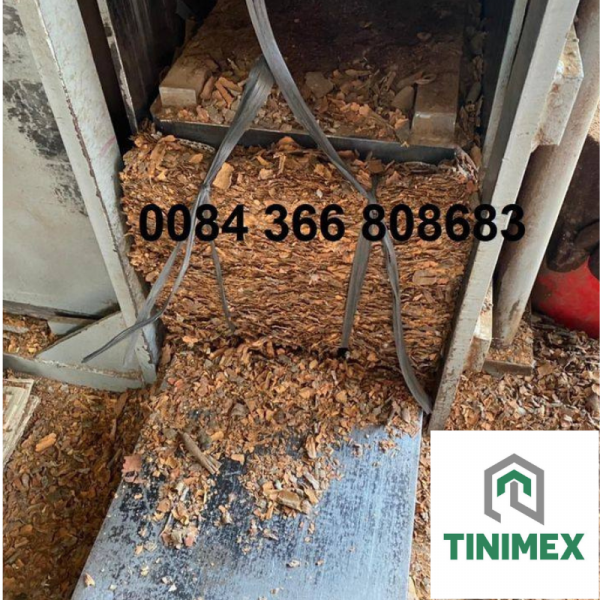5 Costly Mistakes to Avoid When Buying Branch Cut Cassia from Vietnam
5 Costly Mistakes to Avoid When Buying Branch Cut Cassia from Vietnam
Table of Contents
- Introduction: Sourcing Smart in a Competitive Market
- Mistake #1: Choosing on Price Alone Without Testing Samples
- Mistake #2: Ignoring Volatile Oil and Moisture Specs
- Mistake #3: Overlooking Export Documentation and COA
- Mistake #4: Assuming All Branch Cut Cassia Looks the Same
- Mistake #5: Skipping Pre-Shipment Inspection or QA Photos
- Final Tips for Safe, High-Quality Importing
- Contact Tinimex – Trusted Exporter of Branch Cut Cassia
1. Introduction: Sourcing Smart in a Competitive Market
The demand for branch cut cassia from Vietnam has surged in recent years. Unfortunately, so has the number of suppliers offering low-grade, undocumented, or improperly stored cinnamon that can lead to rejected shipments, customer complaints, or worse.
Whether you’re a first-time buyer or a seasoned importer, understanding these 5 critical mistakes can save your company time, money, and reputation.
2. Mistake #1: Choosing on Price Alone Without Testing Samples
Low prices are tempting—but branch cut cassia is not a commodity that should be judged by price tag alone. Failing to test samples can lead to:
- Unexpected bark thickness
- Low volatile oil (VO) content
- Off odors or contamination
Tip: Always request 300–500g samples and test in your own lab or facility before placing bulk orders.
3. Mistake #2: Ignoring Volatile Oil and Moisture Specs
Importers often overlook or don’t verify:
- VO content (should be ≥2.5%)
- Moisture (ideally 10–12%)
This leads to problems like:
- Weak flavor or aroma in product formulation
- Customs rejections for high humidity
- Mold during ocean shipping
Ask for a recent Certificate of Analysis (COA) with every batch.

branch cut cassia COA review: Buyer inspecting COA sheet from Tinimex before approval
4. Mistake #3: Overlooking Export Documentation and COA
A strong product is only as good as the paperwork behind it. Missing or incorrect export documents can cause:
- Delays at port clearance
- Cargo holds
- Legal risks with authorities
Ensure your cassia supplier provides:
- COA, invoice, packing list, bill of lading
- Phytosanitary and fumigation documents
5. Mistake #4: Assuming All Branch Cut Cassia Looks the Same
Not all branch cut cassia is equal. Without visual QA, you risk receiving:
- Bark with inconsistent size or thickness
- Foreign particles, dust, or insect damage
- Pale color or unpleasant aroma
Always ask for pre-shipment photos and video.
side-by-side branch cut cassia quality: Comparison between clean Tinimex cassia and a low-grade competitor sample
6. Mistake #5: Skipping Pre-Shipment Inspection or QA Photos
You should never ship blind. Some importers skip final quality checks and regret it when:
- Boxes arrive broken or wet
- Contents include mixed grades or inferior bark
- Labels are missing or inaccurate
Work only with suppliers who offer pre-loading photos and transparency.

cassia shipment inspection at factory: Tinimex QA team capturing images during final packaging
7. Final Tips for Safe, High-Quality Importing
To protect your purchase:
- Work only with export-experienced suppliers
- Request full specs and third-party COAs
- Confirm all shipping documents before vessel departure
- Avoid seasonal rushes where quality control is weaker
Partnering with the right supplier like Tinimex makes all the difference.
8. Contact Tinimex – Trusted Exporter of Branch Cut Cassia
TINIMEX CO., LTD
🏢 4th Floor, No. 40 Ngo Gia Tu Street, Duc Giang Ward, Long Bien District, Ha Noi, Vietnam
📧 info@tinimex.com
🌐 https://tinimex.com
📞 +84 36 680 8683 (WhatsApp / Zalo)
Why Tinimex:
- Consistent quality control & documentation
- Weekly availability updates
- Trusted by importers in 20+ countries
Internal Links:
External Link:

